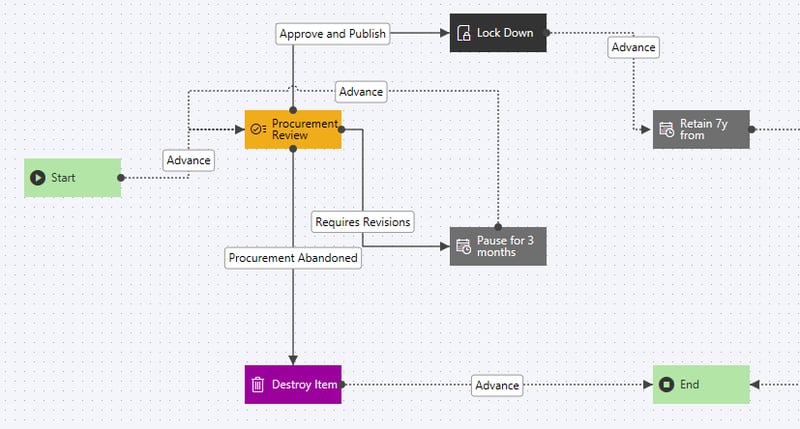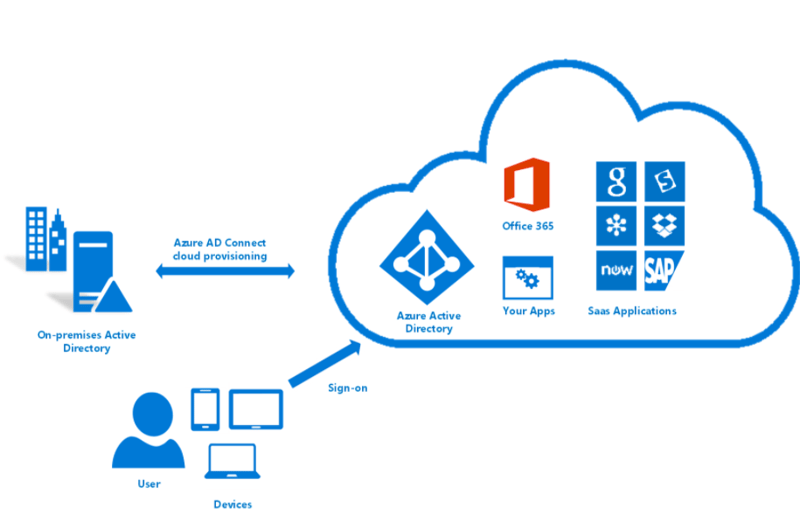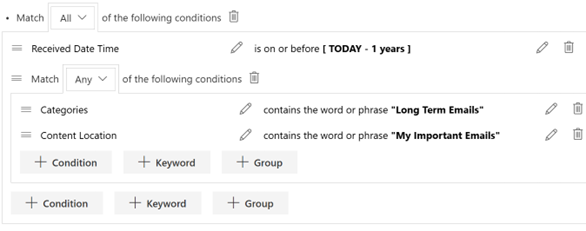 Photo by Simon Migaj from Pexels.
Photo by Simon Migaj from Pexels.
We've discussed what a data lake is, and shown how you can employ the data lake approach for cross-system records management.
| Quick refresher: a data lake is a repository that has capacity for large volumes of structured and unstructured data, allowing you to retain content from all your go-to sources into one location. |
Now, let's talk about why. Here are 6 reasons why your organization should consider implementing a data lake solution...
1. Content from your go-to sources are unified for optimized data accessibility
As we shifted from offices to working remotely last year, we all learned that data accessibility is key for business continuity. No matter where you login from, you still require the ability to access your business critical information.
A data lake solution will stream in content from across your go-to sources: email, file shares, SharePoint, SAP, and even physical records. With the proper permissions set, you and your whole team will have access to the content you need from virtually any device or location.
2. Ensure legal and regulatory records compliance across systems
As we know, compliance must be ensured despite the season. But upholding retention policies and industry standards can be difficult to account for when working with information across multiple systems.
If you're using a data lake solution that's been built with compliance in mind, you can breathe easier. Needing to follow a retention policy? A data lake solution like Collabspace will have content lifecycle workflows that will automatically categorize and apply retention policies where Preserve, Retain, and Destroy actions can be applied to content. Plus, you'll have tools like review lists to streamline processes like content reviews and disposition approvals.
 Image shows a Collabspace workflow.
Image shows a Collabspace workflow.
Need to perform an audit to align with industry standards? All versions and actions around the backed up content can easily be exported for audit purposes. Involved in a litigation case? The backed up content can easily be surfaced and placed under legal hold. Need to transfer your content to NARA for archival purposes? It's all there and easy to export when you've backed it up in a secure data lake.
3. Deeper, more accurate discovery of all content types
We've spent time searching through local file shares and inboxes for a single document, too. Spoiler alert: the average worker spends around 36% of their time searching for information across multiple channels and platforms. 44% of that time they are not able to find the information they were searching for in the first place. Yikes.
| Quick stat: A McKinsey report found that on average, employees spend 1.8 hours every day searching and gathering the information they require. That totals to over 9 hours per week. |
Streaming content from across systems into a data lake whittles locations to search in down to one comprehensive spot. And if you're using an intelligent data lake like Collabspace, you'll get machine learning features which allow for deeper discovery and more accurate results. Automatic transcription and optical character recognition (OCR) let you search for videos, images, scanned pdfs and more (pretty cool, hey?). Shareable templates can also be applied to make future search for that material a breeze.
To see a real-world example of the time-saving benefits of data lake discovery, check out this story about how an organization cut down their FOIA processing time from weeks to minutes. Yes, minutes.
4. Utilize machine learning and artificial intelligence for increased accuracy + insights
The right data lake solution utilizes machine learning and artificial intelligence (AI) . We'd argue that being able to say your organization is using AI for your content management is cool enough to count as a reason. But, in case you need more evidence as to why 70% of organizations will likely implement some form of AI by 2030, learning models can be created based on an entire corpus of organizational content to dramatically increase the accuracy of classification and content enrichment activities.
| Quick stat: Another McKinsey report states that 70 percent of companies are likely to have adopted at least one type of AI technology by 2030. |
With AI, not only can information management processes become automated for ensured compliance, but your search results become more accurate, your data gets auto-categorized, and insights can be extracted for your team to evaluate and drive better business results. Sounds pretty good, right? Tune in to our webinar on exactly how you can use AI content enrichment for these very purposes.
5. Protect your data against prying eyes, accidental deletion, ransomware attacks & more
We understand the concern about storing all your valuable information in one place. There should be concern; data privacy and security is more important than ever. Just this week, we read about an organization experiencing two ransomware attacks in a row because they did not have the proper measures in place. Just think about the dollars saved if they had that content securely stored, and access to instant recovery.
This is why it is of the upmost importance to (at risk of sounding repetitive), have the right data lake solution. Collabspace, for example, has secure, encrypted WORM-compliant storage with Microsoft Azure. All files and versions are automatically backed up, so if the unfortunate event of an attack were to occur, you can recovery your data immediately. Strict permissions can be set to ensure only the eyes you want to see content, will see that content.
 Microsoft Azure Active Directory, image courtesy of Microsoft.
Microsoft Azure Active Directory, image courtesy of Microsoft.
Things get deep, so you can read the details of Collabspace security measures in our article on the topic. But our point is that having your content backed up in the data lake, if that solution has the right measures in place, is a safety guard in case of disaster.
6. All of this happens quietly and quickly, so your team's activities are unaffected
The streaming, the security, the automated end-to-end information management of the data lake is all powerful but silent. That is, organizations that implement the data lake leave operations of their connected systems and related user activities completely unaffected. Streaming snapshot versions of content into the data lake is a transparent, near real-time activity. And users can continue working with the original content version in the original system (although we'd highly recommend doing content discovery in Collabspace to take advantage of its accurate and time-saving benefits).
Conclusion
We put it best in our whitepaper on Collabspace AI: with an intelligent data lake, teams will be able to work on their day-to-day tasks unaffected while AI supports seamlessly in the background.
But now.. those teams have the time, money and headache-saving benefits of a data lake.
All factors to consider as we venture into 2021.
We've linked valuable resources throughout this article, but if you'd like to learn more about how your organization can benefit from implementing a data lake solution, contact us with your questions, or download our free data lake information packet below.
![]()
What do you think? Share your thoughts and questions in the comment section and subscribe to our blog for more content on data lakes, artificial intelligence, information management and more.





